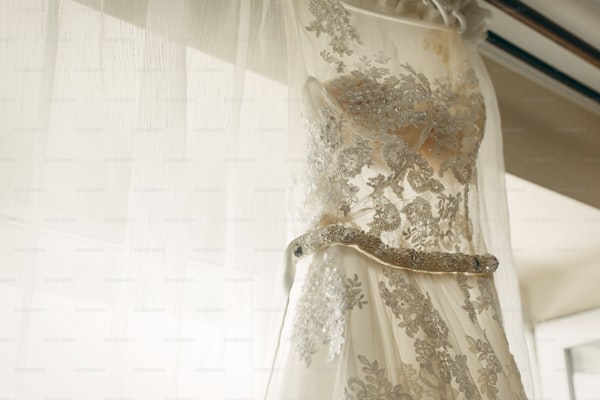What Methods Are Used to Create a Wedding Dress with Cascading Layers?
What Methods Are Used to Create a Wedding Dress with Cascading Layers?
Creating a wedding dress is a magical process, especially when it involves cascading layers that add elegance and movement to the gown. This article delves deep into the various methods used to design such stunning Wedding dresses, no matter if you are a bride-to-be curious about your options or a designer looking to expand your skills. Let’s explore the artistic techniques, materials, and sewing methods that make cascading layers a breathtaking feature of wedding attire.
The Art Behind Cascading Layers
Cascading layers are characterized by the graceful overlap of fabric that flows down the dress. The delicate fall of these layers can evoke an ethereal quality, making the bride look heavenly on her special day. The methods to create such layers can be both traditional and modern, incorporating various fabrics, textures, and construction techniques.
Fabric Selection
The first step in crafting a wedding dress with cascading layers is selecting the appropriate fabric. Here are some popular materials used:
| Fabric Type | Characteristics |
| Satin | Shiny, smooth, and heavy, providing structure to support layers. |
| Tulle | Lightweight and airy, perfect for creating soft, flowing layers. |
| Chiffon | Soft and sheer, adds a dreamy effect to cascading layers. |
| Organza | Thin and crisp, ideal for structured yet flowing layers. |
Choosing the right fabric not only influences the overall style but also determines how well the layers fall and flow.
Design Techniques for Cascading Layers
Several design techniques can be employed to create cascading layers:
1. Ruffles
Ruffles can add dimension and volume to a wedding dress. They can be sewn along the edges of the fabric and placed strategically to create a cascading effect. Ruffles can range from subtle to dramatic, depending on the bride’s preference.

2. Asymmetrical Hemlines
Asymmetrical hemlines create an instant cascading look by varying the length of each layer. This technique allows for the creation of a dramatic silhouette that trails beautifully.
3. Draping
Draping involves arranging fabric on the dress form to create fluid layers that seem to fall effortlessly. This technique requires skill but results in a stunning visual impact, perfect for a wedding gown.
4. Layering Techniques
Experimenting with different layering techniques, such as tiering or stacking, can yield unique results. Each layer can feature different lengths or textures to enhance the cascading look.
Construction Methods
The construction of a wedding dress with cascading layers requires precision and attention to detail. Here are some common methods:
1. Boning and Corsetry
Incorporating boning or corsetry helps support the structure of the layers and offers shape. This is especially important for strapless or off-the-shoulder designs where support is needed to maintain the gown's form.
2. Seam Placement
The placement of seams significantly affects how layers cascade. Seam allowances must be strategically placed to ensure a flowing silhouette that draws the eye downward.
3. Hem Finishing Techniques
Properly finishing the hems of each layer is crucial in creating a polished look. Techniques such as serging or bias binding can prevent fraying while enabling the layers to fall gracefully.
Decorative Elements
Add decorative elements to the cascading layers for an extra touch of elegance. Consider embellishments such as lace, beading, or embroidery that can accentuate the texture and depth of the layers.
1. Lace Overlays
A lace overlay adds romance and sophistication, enhancing the cascading effect while providing a soft texture.
2. Beaded Details
Beading provides a touch of glamour. Strategically placing beads along seams or layers can create visual interest without overwhelming the design.
Trends in Cascading Layered Wedding dresses
Today’s trends for Wedding dresses with cascading layers vary widely. Some popular styles include:
- Mermaid silhouettes with layered skirts
- Bohemian-inspired flowy gowns with soft cascading chiffon
- Modern ball gowns featuring structured satin cascading layers
Brides looking for a trendy yet timeless gown should consider these options that allow for both movement and elegance.
Tips for Brides Choosing Cascading Layered Wedding dresses
When selecting a wedding dress with cascading layers, keep the following tips in mind:
- Body Shape: Identify your body shape and select a dress that complements it.
- Comfort and Fit: Ensure that the dress feels comfortable and allows for easy movement.
- Venue: Consider the wedding venue to choose the style of cascades that fit the theme.
Conclusion
Creating a wedding dress with cascading layers involves a blend of artistic methods and technical skills. From fabric selection to decorative elements, each aspect plays a crucial role in the final design. As trends evolve, brides now enjoy more options than ever, allowing them to express their unique style. When choosing a cascading layered gown, remember to consider fit, comfort, and personal style, as they will elevate the overall look on your special day. Whether you want a romantic, bohemian, or Modern dress, the perfect cascading layers await you!
Ultimately, the methods used for creating a wedding dress with cascading layers are extensive, each offering different possibilities to achieve that dream gown. With the right materials, design techniques, and construction methods, your wedding dress will not only showcase the beauty of cascading layers but also ensure you feel confident and beautiful as you walk down the aisle.
